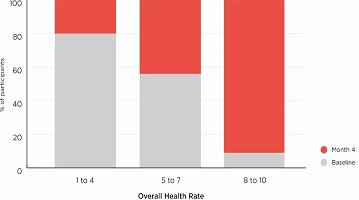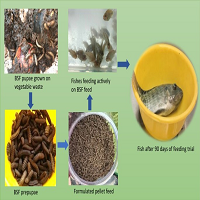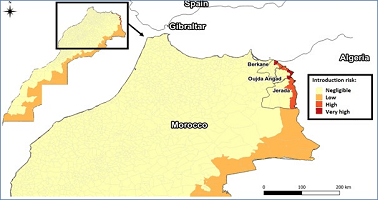HUMAN CHORIONIC GONADOTROPIN
HCG is the hallmark hormone of pregnancy.1 It belongs to the families of glycoprotein hormones and cystine knot growth factors.2,3 The glycoprotein hormone family also includes luteinizing hormone (LH), follicle stimulating hormone and thyroid stimulating hormone.2 They all are heterodimers, consisting of dissimilar, non-covalently bound α and β-subunits.2 While α subunits are similar, encoded by the same gene, the β-subunits are dissimilar, encoded by different genes.2 The β-subunit of hCG is encoded by a cluster of six-genes, some of which are pseudogenes.2 Among the glycoprotein hormones, hCG and LH are not only structurally and conformationally similar, but also bind and activate the same cell surface G-protein coupled receptors.1,2 The cystine knot growth factors family also includes nerve growth factor, transforming growth factor-β2, fibroblast growth factor-β and platelet derived growth factor.3 Even though the family members are structurally unrelated, they share a seat-belt conformation and mediate the pleiotropic actions through binding and activation of the distinct receptors in many different cell systems in the body.
EVOLUTIONARY ASPECTS OF hCG
The genes of hCG β-subunit are evolved from LH β-subunit gene through duplication and mutations, which result in the extension of the c-terminus by about 30 amino acids.2 The extended part contains additional glycosylation sites.2 Glycosylation increases the circulatory half-life, but it could also have other effects. These hCG features may have aided in the evolution of treetop dwelling primates to protect their pregnancies against all the odds.4 The receptors and signaling systems must have co-evolved to enable the system operational.4 Once evolved, the system continued to exist through the present day sub-human primates and humans. It is likely that the hCG evolution may still be continuing. The above presumptive reasoning may explain why hCG has evolved in sub human primates and humans, when they already have a functional homolog LH.
GLYCOSYLATION OF hCG
Glycosylation is a post-translational modification of hCG.5 It occurs during the translation and processing of hCG subunits in the rough endoplasmic reticulum and Golgi apparatus, by the catalytic action of glycosyl transferases.5 The process involves the addition of a series of linearly linked and/or branched monosaccharaides.6 The carbohydrate content accounts for about 30% to 35% of the molecular mass of hCG.2,5 This amount increases in its hyperglycosylated form, which seems to be present primarily in complicated pregnancies and in trophoblast malignancies.7,8
Carbohydrate chains are covalently linked to the protein backbone, either as N-linked at asparagine residues or O-linked units at serine residues.2,5-7 While α-subunit has 2 N-linked chains, β-subunit has 2 N-linked and 4 O-linked chains.2,5-7 The Glycosylation differences make hCG a very heterogeneous molecule.5
Carbohydrates are not required for the receptor binding of hCG.2,5,9 However, they are required for the expression of its functions.2,5,9 The latter comes from its increased survival in the circulation as well as its ability to activate the second messengers’ generation at the cell surface.2,5,9 The removal of carbohydrates increases the receptor binding, but at the same time eliminates hormonal activity of the hCG.2,5,9 Deglycosylated hCG is an antagonist of glycosylated hCG, because deglycosylated molecule binds receptors, blocking the binding and an activation of the post-receptor signal generation by glycosylated hormone.2,5,9
PARADIGM SHIFT ON THE hCG ACTIONS
The only role that hCG was thought to have until about 30 years ago, is the stimulation of corpus luteum secretion of progesterone until about 9th week to maintain pregnancy. Paradoxically, hCG is present throughout pregnancy, albeit at much reduced levels, after the peak levels have been reached at about the 9th week.1 While the role of hCG in corpus luteum secretion of progesterone during early pregnancy is irrefutable, the old paradigm that believes in hCG having no other functions is not.1 This is because that there is an incontrovertible evidence for hCG playing multiple roles throughout pregnancy.1,10
The hCG actions in non-gonadal tissues can be classified into those that initiate pregnancy, those that favor pregnancy maintenance and finally those that are permissive for the evolution of labor at the end of pregnancy.1,10,11 These include immunologic tolerance of fetus, behavioral, urodynamic and other changes during pregnancy.10,11 Instead of showing all the tissues that hCG can regulate, which can be found in the references listed in Table 1, only the relevant tissues to the therapeutic indications are shown.
Multiple Exciting New Therapeutic Opportunities with hCG
The studies on non-gonadal actions of hCG have yielded greater number of therapeutic opportunities than those on the gonadal actions. These opportunities may seem far-fetched, but they are not, as amply discussed in the references cited in Table 1. The table shows the list along with the relevant tissues and key actions. Instead of reiterating the details, which are a part of articles cited in the table, general discussion that applies to all of the therapies has been provided. Admittedly, there are still many lacunae and these knowledge gaps can only be filled by further research.
Many of the illnesses in Table 1 can be fatal. All of them can have long-lasting troublesome effects, debilitating, come with chronic pain and suffering, sleep deprivation, depression, anxiety, social isolation and stigma, loss of sexual intimacy, productivity in the work place, job and health insurance, etc. The family members and friends of affected individuals often face emotional problems and economic setbacks. The cost to the U.S. economy alone runs into millions to billions of health care dollars per year.
There are current therapies for these illnesses, but they are not either effective or come with severe side effects. Many are quite expensive and a few have a low tolerability. There is clearly an unmet need for the cost effective and safer therapies. hCG therapy could be one of them and it will be relatively safe and cost effective. Judging from anecdotal evidence, studies on animal models, cells and tissues and on human subjects in some cases, hCG therapy is likely to work for these diseases. To realize this promise, randomized, double-blinded, placebo controlled clinical trials have to be performed with optimal hCG doses, route and frequency of administration and an appropriate selection of the patients. These may vary with the disease.
The cost of clinical trials can exceed 50 to 100 million dollars. The cost comes with an expectation that the trials show benefits. From the evidence that hCG treatments are likely to work, financial rewards can outweigh the financial risks.
The hCG therapies will have a minor to tolerable side effects as compared with many of the current therapies. The effectiveness can be further enhanced by newer technologies, which do exist and can be made to work for hCG. The important one will be making “hCG Pills”, using the procedures that are being employed for developing insulin pills.12 This technology permits encapsulating hCG in spheres of neutral lipid molecules, that insulates hCG from destruction by stomach acids. The availability of pill will have a huge impact on the hCG use even in the remote areas of the world.
Orally active LH agonists, that can induce ovulation, are already available.13,14 However, it is not known whether they will be comparable to hCG pills. In support of the possibility that they could be different are the findings that showed LH and hCG are not completely functionally equivalent and they may not activate the same genes or to the same extent.15 Thus, the therapeutic benefits that hCG pills offer may not necessarily be the same as oral LH agonists.
The effectiveness of hCG can also be increased by well planned combination therapies. They could lower the toxicity of currently used drugs; reduce the cost, while preserving their desirable properties. Moreover, the combination therapies can be more active than single therapies because of the differences in their mechanisms of action. The potential hCG therapies should not be considered as panacea and they may not completely replace the current therapies. Instead, they can complement them and become an important part of physician’s toolbox to treat these diseases. So what do we lose by exploring them?
Inclusion of hCG in the Family of Therapeutic Glycoproteins
The family of therapeutic glycoproteins contains many members.16,17 While living cell systems can make many of them, others can be made by glycoengineering. Some of them are already in clinical use, saving countless number of human lives. Many others are in clinical trials. Currently therapeutic glycoproteins account for more than one-third of the U.S. Food and Drug Administration (FDA) approved biotherapeutics and this number is likely to increase rapidly in the near future. They are made in eukaryotic systems and marketed under various trade names.
The members of the family come from different sources and vary in the amount of glycan moieties, their sizes, structures, amino acid composition, conformation, folding patterns, etc.16,17 Among the family members, four are selected for brief discussion to highlight their importance in the treatment of some of the most dreadful human diseases. The four are, erythropoietin (EPO), interferons (IFNs), monoclonal antibodies (mAbs) and tissue plasminogen activator (tPA).
EPO is a glycoprotein hormone primarily made by kidneys in adults and by liver in fetus and neonates.18,19 It is highly glycosylated (40%) and produced in response to hypoxia. It controls the production of red blood cells (RBC) through its cytokine like actions on their precursors in the bone marrow.18,19 It is used for the treatment of anemia due to chronic kidney disease, chemotherapy and radiation treatment for cancers, myelodysplasia, inflammatory bowel disease and ulcerative colitis.18,19
IFN are a group of proteins that are made by virus (or other pathogens) infected cells in the body.20,21 They belong to cytokine class family, which are communication molecules to trigger the protective defenses of the immune system.20,21 There are 3 types; IFN-β belongs to type 1 and IFN-γ to type 11.20,21 Among the IFNs, β and Υ are glycoproteins.20,21 They are anti-viral molecules and can modulate the functions of immune system.20,21 They are used for the treatment of chronic granulomatous disease and multiple sclerosis.20,21
mAbs are produced by hybridoma technology and contain 2 heavy and 2 light chains covalently bound by disulfide bridges.22,23 Five of the top 10 best selling pharmaceutical products in 2016 are mAbs. The FDA approved the use of about 30 of them and more than 200 others are currently under clinical trials.24,25 They bind monospecifically to the cell surface antigens of cancer and other cells and trigger the events that culminate in their death.26,27 The immunotherapies against cancers and some autoimmune diseases with mAbs are rapidly gaining ground.28,29
tPA is a serine protease made by vascular endothelial cells.30,31 It breaks down the blood clots via the plasmin generation.30,31 It is the standard of care for the treatment for acute ischemic strokes.32,33 It is most effective when it is used within 3 to 4.5 hrs after the first onset of symptoms.32,33 It is also used for the treatment of pulmonary embolism and myocardial infarctions, which are associated with blood clots.34,35
hCG has been used for the past several decades for the induction of follicular maturation and ovulation and for the treatment of hypogonadotropic hypogonadism in males. It is becoming increasingly clear from the studies on non-gonadal actions that hCG has rather a broad therapeutic potential against many diseases, that are no less devastating than the ones treated by EPO, IFNs, mAb and tPA. However, it has never been included in the family of therapeutic glycoproteins. Such inclusions can fast track glycoengineering research on hCG to make it therapeutically more effective than the currently used preparations.
There has been a declining interest among biotechnology and pharmacy companies to invest resources in the further development of hCG analogs. This is due to smaller market share for them as compared with the demand for agents to treat cancers and autoimmune diseases. The declining interest could reverse, once the companies come to grips with the multiple hCG therapies.
Glycoengineering
Glycoengineering consists of series of technologies that allow modifying the quantity as well as the quality of the existing glycan moieties in the glycoproteins.36,37 It can also add glycan moieties to non-glycoproteins. The modifications include changing the total amount of carbohydrate, linear or branching pattern, monosaccharaides composition or even adding new chains at different sites on the protein back bone. These changes could further increase the circulatory half-life and also can improve the molecular stability, protect against proteolytic degradation, oxidation, chemical cross linking, pH denaturation, and aggregation and increase the solubility.37-40 All these desirable features can increase the effectiveness and pharmacodynamics of therapeutic glycoproteins.36 Thus, glycoengineering is becoming a valuable tool in the production of safe and effective therapeutic glycoproteins. It is also helping with minimizing some of the pharmaceutical problems and enhancing the production of safe and high quality products. However, many challenges still remain.
To the authors’ knowledge, glycoengineering has never been used to increase the therapeutic effectiveness of hCG. It is now time to do so because of the multiple exciting new therapeutic opportunities with hCG (Table 1). However, it is not known what glycan changes are necessary to make hCG more effective than the natural product. Moreover, the optimal changes could vary with the clinical indication. Thus, a great deal of work is needed.41-43
CONCLUSION
Even though, recombinant hCG is commercially available, urine derived hormone is often used in reproductive medicine. Batch-to-batch variations in urine derived hCG are known to exist and they could be coming from carbohydrate heterogeneity due to the isolation and purification procedures. Therefore, we recommend using recombinant hCG for glycoengineering, as it is likely to ensure the production of a consistent and high quality homogeneous products. Once glycoengineered hCG is made, it could be used in making the hCG pills. The availability of glycoengineered hCG in a pill form could lead to an world-wide expansion of its use.






